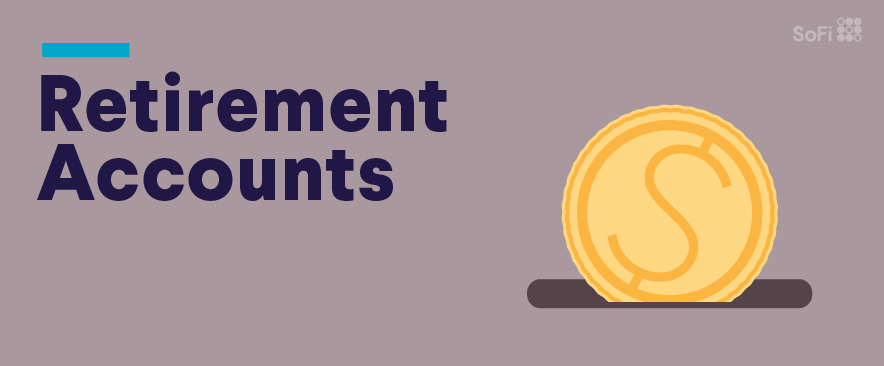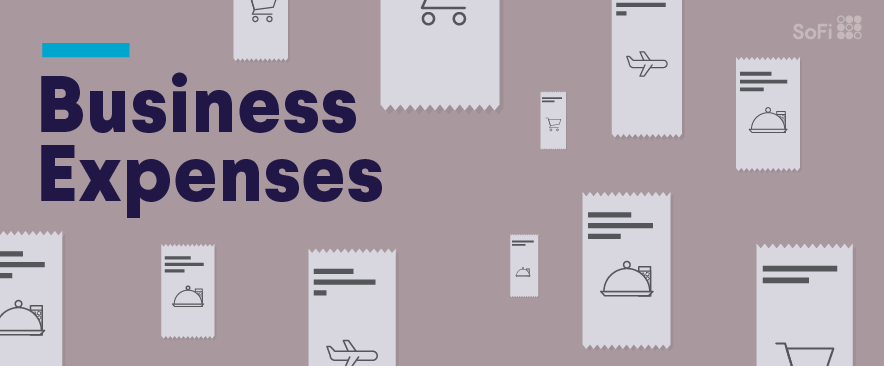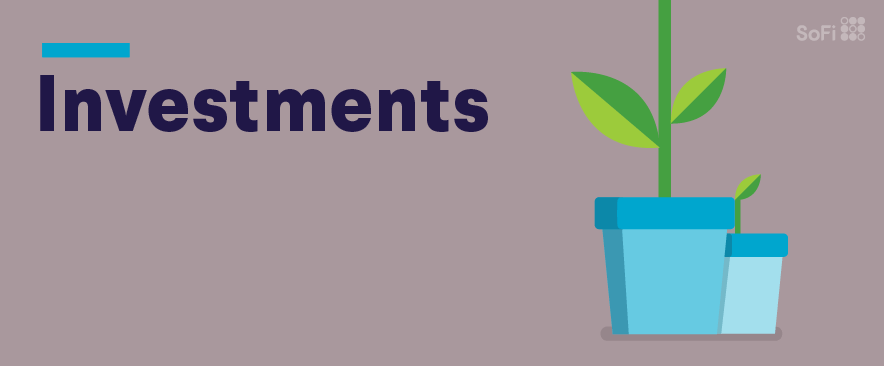Car Repossession: How it Affects Your Finances
If you fail to make your car payments or otherwise default on your loan, you risk having your car repossessed, or taken back by the lender.
The process of vehicle repossession can be costly. You may be responsible for the deficiency balance on the car, which is the amount you owe on the car, minus the amount the lender sells the car for, as well as additional fees.
Repossession can also have a negative impact on your credit score, which can make it harder to qualify for another car loan, as well as credit cards or a mortgage, in the future.
Read on to learn more about car repossession, how to avoid it, and what your options are if it happens.
Recommended: How Much Auto Insurance Do I Really Need?
Why Do Cars Get Repossessed?
When you borrow money to buy a car, or you lease a car, you generally have to agree to specific terms outlined in the contract. You will likely have to agree, for instance, that you will make monthly payments on time and keep adequate insurance on the vehicle.
If you don’t meet those requirements, the lender (or leasing company) has the right to take the car. In some cases, a lender will alert you of your missed payments and attempt to collect payment prior to repossessing the vehicle.
Depending on the loan contract you signed, however, some lenders or leasing companies can take the car back after one missed payment, without any prior notice of late payment, or warning you that your car is going to be repossessed.
If having car insurance is a requirement of your auto contract, as it often is, your car can be repossessed if your auto insurance has lapsed and isn’t being paid.
What Rights Do I Have if My Car is Repossessed?
While the car does not technically belong to you and is the property of the lender or leasing company, you do have some basic rights if your car is repossessed. These include:
Your Personal Property
If you have any items of value in the car, such as a laptop or car seat, the bank or leasing company that owns the loan, or the car repossession agency, cannot keep or sell the property found inside the car.
In some states, a creditor must tell you what items were found in the car and how you can get them back.
If you’re having trouble retrieving personal items that are of significant value, you might want to file a complaint , or talk to an attorney about how to get your belongings back or if you can be compensated for them.
Selling Price
If your car is taken and sold, the lender doesn’t have to sell it for the highest possible price, but they are legally required to make an effort to get fair market value for the car and to sell it for a “commercially reasonable” price.
The reason is that the sales proceeds will go toward paying off your debt. It would be unfair to repossess a vehicle and then give it away for very little to somebody else
Also key: If the creditor holds onto the car and doesn’t resell it, you generally will not owe a deficiency balance on the car (which is the amount you owe minus what the car sells for).
Getting a Car Out of Repo
Should you be interested in getting a repossessed car back, that might be an option. You may be entitled to buy back the vehicle by paying the full amount you owe on the car. This typically includes your past due payments and the remaining debt, along with any fees that accumulated in the repossession process.
Another option for getting your car back is to try to buy back the repossessed car by bidding on it at the repossession sale.
Or, you might instead decide to save up for a car and get a less expensive vehicle.
How Much Does a Car Repossession Cost?
If the lender repossesses your car and then sells it at an auction, the sales proceeds go toward your loan balance. In many cases, the car sells for less than you owe, so your loan is still not paid off. The amount you owe is the deficiency balance.
In addition to the deficiency, you may also have to pay for costs related to repossession. Charges can include expenses for sending a repossession agent, storing the vehicle, and preparing the vehicle for sale.
If the deficiency balance goes unpaid, it can result in a lawsuit against you, along with wage garnishment or a lien against your property.
If you are able to buy the car back before it goes to auction, you will likely be responsible for paying the full amount you owe on the car, which may include your past due to payments and the remaining debt, along with any fees that accumulated in the repossession process.
How Car Repossession Affects Your Credit
On its own, a repossession is a red flag on your credit report and can have a serious impact on your scores. A repossession can also stay on your credit report for seven years, beginning with the date of your first late payment.
In addition to the repossession being listed in your credit report, failing to pay your auto loan on time may trigger other negative marks in your credit. For each month you are 30 days or more past due, the lender can report the account as delinquent. If the account was sent to a collection agency, a record of the collection account may also appear in your reports.
Recommended: Guide to Reading & Understanding Your Credit Report
How to Avoid Car Repossession
It can often be easier to prevent a vehicle repossession from happening than trying to fix it after the car has been taken away. Here are some ways you may be able to reduce the risk of repossession if you’re struggling with car payments.
Talking to Your Lender
If you fall behind on your auto loan or you think you soon may, it can be worthwhile to reach out to the lender to discuss what options you may have.
There is a chance your lender will allow you to defer your loan payments for a period of time or help you come up with another solution to allow you to keep your car. This shows good faith as you try to remedy your situation.
If you and the lender are able to come to an agreement about amending or skipping payments, it’s a good idea to get the new terms addressed in writing to avoid problems down the line.
Refinancing Your Car Loan
If you’re struggling to pay your auto loan, refinancing might help get your payment to an affordable level so you can continue to pay on time. Refinancing entails paying off your current auto loan with a new car loan. If you are approved for a new loan, refinancing could help you avoid repossession by satisfying what you owe on your existing loan and starting fresh with a new lender.
Considering Voluntary Repossession
If your lender won’t accept late payments and demands that you return the car, voluntarily repossessing (or surrendering) the car may be a better option than having it taken away.
Turning in your car can reduce the creditor’s expenses and, in turn, reduce how much you’re required to pay (though you’ll still likely be responsible for late payments, late fees, and possibly a deficiency balance). A voluntary repossession also gives you more control over when you give up your car than having the car suddenly taken away from you.
Your creditor may still enter the late payments and repossession on your credit report, where it can remain for seven years. However, a “voluntary surrender” can be less damaging to your credit than a “repossession.”
Impact Your Credit After a Car Repossession
While a repossession can negatively impact your credit report, it won’t be forever. As time passes, and as you handle your other credit obligations responsibly, the impact on your credit score can lessen.
Some ways to help positively impact your credit score include:
• Paying off any outstanding debt on your car loan
• Making payments on other debts (such as student loans) on time
• Maintaining low balances on credit cards and paying them off in full every month
• Making timely payments for all of your bills (so none are ever sent to debt collection agencies)
Handling your money responsibly and getting more motivated to save money can help you pay your debts back diligently. This shows future lenders that you can make wise money decisions and will be trustworthy when it comes to paying off loans and credit in the future.
The Takeaway
If you have missed payments on your vehicle or let your car insurance lapse, the lender can repossess your car and sell it at an auction. You will then likely have to pay the difference between what the car sells for and what you still owe, plus various additional fees.
Depending on your loan or lease contract, you may have time to make the missing payments and retrieve your car before it’s sold at auction.
Either way, a car repossession can be costly, and also have a negative and lasting impact on your credit scores.
One of the best ways to avoid car repossession is to stay on top of your car payments, making them in full and on time each month. Setting up a monthly budget and learning how to save money from your salary can help you make this happen.
Another good safeguard is to wait until you’ve saved up for a substantial downpayment on a car before you buy, or use that money to go with a more affordable used car and pay for it in full.
A SoFi Checking and Savings online bank account can help make this happen. With SoFi Checking and Savings, you spend and save in one convenient place and can easily track your spending on your dashboard in the app. What’s more, your money earns a competitive annual percentage yield (APY) and you pay no account fees, both of which can help your money grow faster.
SoFi® Checking and Savings is offered through SoFi Bank, N.A. ©2024 SoFi Bank, N.A. All rights reserved. Member FDIC. Equal Housing Lender.
The SoFi Bank Debit Mastercard® is issued by SoFi Bank, N.A., pursuant to license by Mastercard International Incorporated and can be used everywhere Mastercard is accepted. Mastercard is a registered trademark, and the circles design is a trademark of Mastercard International Incorporated.
SoFi members with direct deposit activity can earn 4.20% annual percentage yield (APY) on savings balances (including Vaults) and 0.50% APY on checking balances. Direct Deposit means a recurring deposit of regular income to an account holder’s SoFi Checking or Savings account, including payroll, pension, or government benefit payments (e.g., Social Security), made by the account holder’s employer, payroll or benefits provider or government agency (“Direct Deposit”) via the Automated Clearing House (“ACH”) Network during a 30-day Evaluation Period (as defined below). Deposits that are not from an employer or government agency, including but not limited to check deposits, peer-to-peer transfers (e.g., transfers from PayPal, Venmo, etc.), merchant transactions (e.g., transactions from PayPal, Stripe, Square, etc.), and bank ACH funds transfers and wire transfers from external accounts, or are non-recurring in nature (e.g., IRS tax refunds), do not constitute Direct Deposit activity. There is no minimum Direct Deposit amount required to qualify for the stated interest rate. SoFi members with direct deposit are eligible for other SoFi Plus benefits.
As an alternative to direct deposit, SoFi members with Qualifying Deposits can earn 4.20% APY on savings balances (including Vaults) and 0.50% APY on checking balances. Qualifying Deposits means one or more deposits that, in the aggregate, are equal to or greater than $5,000 to an account holder’s SoFi Checking and Savings account (“Qualifying Deposits”) during a 30-day Evaluation Period (as defined below). Qualifying Deposits only include those deposits from the following eligible sources: (i) ACH transfers, (ii) inbound wire transfers, (iii) peer-to-peer transfers (i.e., external transfers from PayPal, Venmo, etc. and internal peer-to-peer transfers from a SoFi account belonging to another account holder), (iv) check deposits, (v) instant funding to your SoFi Bank Debit Card, (vi) push payments to your SoFi Bank Debit Card, and (vii) cash deposits. Qualifying Deposits do not include: (i) transfers between an account holder’s Checking account, Savings account, and/or Vaults; (ii) interest payments; (iii) bonuses issued by SoFi Bank or its affiliates; or (iv) credits, reversals, and refunds from SoFi Bank, N.A. (“SoFi Bank”) or from a merchant. SoFi members with Qualifying Deposits are not eligible for other SoFi Plus benefits.
SoFi Bank shall, in its sole discretion, assess each account holder’s Direct Deposit activity and Qualifying Deposits throughout each 30-Day Evaluation Period to determine the applicability of rates and may request additional documentation for verification of eligibility. The 30-Day Evaluation Period refers to the “Start Date” and “End Date” set forth on the APY Details page of your account, which comprises a period of 30 calendar days (the “30-Day Evaluation Period”). You can access the APY Details page at any time by logging into your SoFi account on the SoFi mobile app or SoFi website and selecting either (i) Banking > Savings > Current APY or (ii) Banking > Checking > Current APY. Upon receiving a Direct Deposit or $5,000 in Qualifying Deposits to your account, you will begin earning 4.20% APY on savings balances (including Vaults) and 0.50% on checking balances on or before the following calendar day. You will continue to earn these APYs for (i) the remainder of the current 30-Day Evaluation Period and through the end of the subsequent 30-Day Evaluation Period and (ii) any following 30-day Evaluation Periods during which SoFi Bank determines you to have Direct Deposit activity or $5,000 in Qualifying Deposits without interruption.
SoFi Bank reserves the right to grant a grace period to account holders following a change in Direct Deposit activity or Qualifying Deposits activity before adjusting rates. If SoFi Bank grants you a grace period, the dates for such grace period will be reflected on the APY Details page of your account. If SoFi Bank determines that you did not have Direct Deposit activity or $5,000 in Qualifying Deposits during the current 30-day Evaluation Period and, if applicable, the grace period, then you will begin earning the rates earned by account holders without either Direct Deposit or Qualifying Deposits until you have Direct Deposit activity or $5,000 in Qualifying Deposits in a subsequent 30-Day Evaluation Period. For the avoidance of doubt, an account holder with both Direct Deposit activity and Qualifying Deposits will earn the rates earned by account holders with Direct Deposit.
Members without either Direct Deposit activity or Qualifying Deposits, as determined by SoFi Bank, during a 30-Day Evaluation Period and, if applicable, the grace period, will earn 1.20% APY on savings balances (including Vaults) and 0.50% APY on checking balances.
Interest rates are variable and subject to change at any time. These rates are current as of 10/31/2024. There is no minimum balance requirement. Additional information can be found at https://www.sofi.com/legal/banking-rate-sheet.
Financial Tips & Strategies: The tips provided on this website are of a general nature and do not take into account your specific objectives, financial situation, and needs. You should always consider their appropriateness given your own circumstances.
External Websites: The information and analysis provided through hyperlinks to third-party websites, while believed to be accurate, cannot be guaranteed by SoFi. Links are provided for informational purposes and should not be viewed as an endorsement.
Disclaimer: Many factors affect your credit scores and the interest rates you may receive. SoFi is not a Credit Repair Organization as defined under federal or state law, including the Credit Repair Organizations Act. SoFi does not provide “credit repair” services or advice or assistance regarding “rebuilding” or “improving” your credit record, credit history, or credit rating. For details, see the FTC’s website .
SOBK0623007









